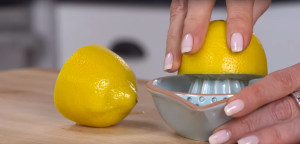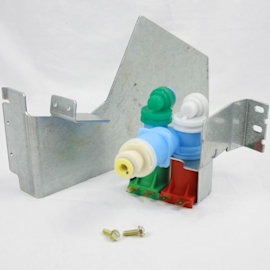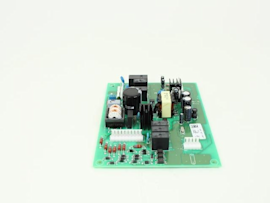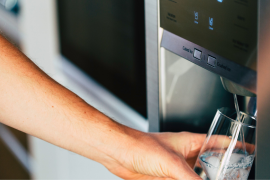7 uncommon tips for kitchen cleaning


These 7 tips for occasional deep-cleaning around the kitchen are a little out of the ordinary, but super useful.
1. Clean inside the dishwasher
It seems illogical that the inside of a dishwasher can get dirty, given all the soapy water that splashes around inside. But hard water, detergent residue, food particles and grease can cause a smelly buildup of calcium and gunk in the dishwasher.
Use a dishwasher cleaner such as Affresh to get rid of and prevent buildup. If your dishwasher has a plastic tub, you can instead put a cup or two of white vinegar in a bowl on the top rack of an otherwise-empty dishwasher and run the normal cycle. Don’t use vinegar in a stainless-steel tub.
2. Stop loading glasses the way you load glasses
On the topic of dishwashers, you know how you always set the glasses over the tines? Don’t. Manufacturers recommend places glasses between the tines, to decrease the chance that they’ll break. Watch our video to find out other tips on how to load a dishwasher.
3. Use a citrusy trick for cleaning the microwave
Bring a couple of cups of water mixed with a few tablespoons of lemon juice to a boil in the microwave—depending on your microwave, that takes about 5 minutes. Wait another 5 minutes before opening the door. The steam does a great job of loosening the nuked spatters, which you can then wipe off with a sponge or soft cloth.
4. Make the refrigerator uber-presentable
No doubt, as part of your regular kitchen cleaning routine, you throw out old food and almost-empty jars and bottles; hand-wash all the refrigerator shelves and drawers; and wipe the exterior door and sides to get rid of fingerprints and grease spatters that flew over from the stove. Right?
To take your refrigerator cleaning to The Next Level, turn all the containers so the labels face out. It sounds a little obsessive, but you’ll be amazed at how good it looks.
While you're at it, make sure you're storing food correctly so it stays fresh as long as possible. If you don't know exactly where everything should go, these guidelines can help.
Finally, while you're in the fridge, clean out all the crumbs and gunk that congregate in the rubber seal around the door.
5. Debug the overhead light fixture
It’s time to clean out the dead insects that have been resting in peace in the bowl of the light fixture.
Turn off power to the light and give it time to cool, and then climb up a ladder to reach the fixture (none of this standing-tiptoe-on-the-chair business). Hold the glass bowl with one hand while loosening the small screws on the sides with the other just enough that you can slip the shade off the fixture. (You can instead remove the screws completely, but it requires more dexterity to reattach the bowl or shade when you have to thread the screw into its hole.)
Dump out insects and dirt that have collected in the bowl, carefully wash and dry it by hand and reinstall it.
If the light fixture happens to be a ceiling fan, while you’re up there wipe the blades with a damp cloth to remove grease and dust.
6. Clean your oven ASAP just in case
If you plan to use your oven’s self-cleaning feature before cooking for a big get-together, clean it a week or two before the event to give plenty of time for the odor of charred food remains to dissipate. Getting an early start also gives you time to fix the oven or have it repaired in the unlikely event that something goes wrong—like the door won’t unlock after the oven cools, or the self-cleaning cycle’s high temperatures trip internal safety devices and the oven won't heat.
7. Finish up with the little stuff
Finally, take a damp sponge and soft drying cloth to the dirty things you never notice until guests arrive: cabinet handles and pulls, and the areas around them; light switches; the base of the sink faucet (especially behind it); door knobs; the top of the range hood; anything decorative hanging on the walls; and window sills. You’re sure to think of more once you get in the groove.
Most common symptoms to help you fix your refrigerators
Choose a symptom to see related refrigerator repairs.
Main causes: control board or cold control failure, broken compressor start relay, compressor motor failure, defrost tim…
Main causes: jammed ice cubes, broken ice maker assembly, dirty water filter, kinked water line, bad water valve, freeze…
Main causes: water valve leaking, frozen or broken defrost drain tube, overflowing drain pan, cracked water system tubin…
Main causes: damaged door seal, faulty defrost sensor or bi-metal thermostat, broken defrost heater, bad defrost timer o…
Main causes: blocked vents, defrost system problems, evaporator fan failure, dirty condenser coils, bad sensors, condens…
Main causes: blocked air vents, compressor problems, condenser or evaporator fan not working, control system failure, se…
Main causes: leaky door gasket, defrost system failure, evaporator fan not running, dirty condenser coils, condenser fan…
Things to do: clean condenser coils, replace the water filter, clean the interior, adjust doors to prevent air leaks, cl…
Most common repair guides to help fix your refrigerators
These step-by-step repair guides will help you safely fix what’s broken on your refrigerator.

How to replace a refrigerator water valve
Replace the water valve that feeds water to the ice maker and water dispenser if it no longer controls the flow of water…

How to clean refrigerator condenser coils
Help your refrigerator run more efficiently by cleaning the condenser coils. It's easy and takes just a few minutes.…

How to replace a refrigerator temperature control board
If the temperature in your refrigerator doesn't match the temperature you set, the problem could be the temperature cont…
Effective articles & videos to help repair your refrigerators
Use the advice and tips in these articles and videos to get the most out of your refrigerator.

No matter what style Maytag refrigerator you have, we can walk you through replacing the water filter.…

Learn about all the convenient features on our Sears PartsDirect website that make your parts purchases easier.…

Get tips and advice on replacing the water filter in your LG refrigerator.…
